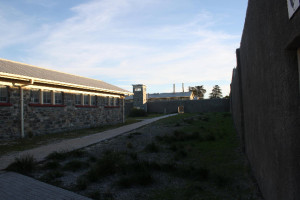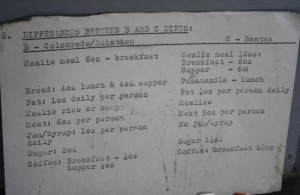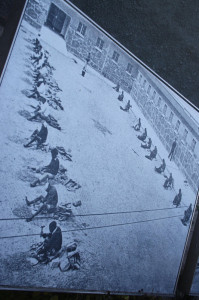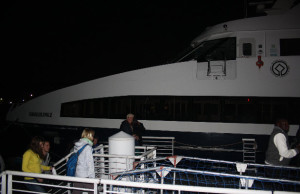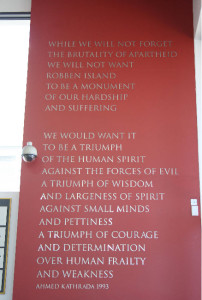Tag Archive
activity architecture art artist building Canada children city CostSaver downtown drive i-95 entertainment Europe event exhibit family festival Florida food fun historic History landmark local Museum music Nature New Zealand Ontario roadtrip sculpture Seattle show sights sightseeing tour tourist Trafalgar travel travelblogger view Washington Washington State water world
US: Seattle, WA – Boozy Seattle Fire June 6, 1889
This pole of newspaper plates reminds us of the Great Seattle Fire which destroyed the entire central business district on June 6, 1889. The fire started in the basement of a downtown building and lasted for less than a day. It quickly spread to the Dietz & Mayer Liquor Store, which exploded, the Crystal Palace Saloon, and the Opera House Saloon. Fueled by alcohol, the entire block from Madison to Marion was on fire and Seattle’s water supply could not cope. You can take a tour of Underground. Seattle as the city was rebuilt on top of the old ruins.
US: Annapolis, MD – A Week Long Celebration of the Arts and the Irish
Celebrating Annapolis’ Diverse Arts Scene, Annapolis Arts Week was created to bring together the area’s local artists and musicians for a week of art, food, block parties, events, music, and festivals.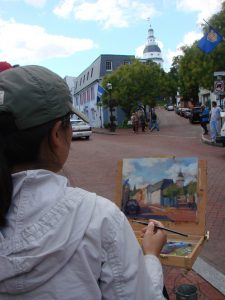
The week includes major events: Paint Annapolis, a county-wide, juried, plein air competition celebrating its 15th year with 30 distinguished artists from around the globe. The artists will create 300 landscape works, highlighting the special colonial architecture, marine atmosphere, and overall energy of Annapolis. p a i n t a n n a p o l i s . o r g
Paint Annapolis features special events every day:
Sunday, June 3: Dueling Brushes – Quick Draw at Susan B Campbell Park
Monday June 4: Artist paint in Anne Arundel County
Tuesday, June 5: Paint the Bay Reception at Annapolis Maritime Museum
6-8pm
Wednesday, June 6: Artists paint in the city of Annapolis
Nocturne at dusk – Dinner Under the Stars
Thursday, June 7: Artists paint in the historic district
Art on the Avenue, Maryland Avenue, 5-7pm
Friday, June 8: Collector’s Award Reception, 6:30 – 9pm
Saturday June 9 & Sunday June 10: Reception & Sales at Circle Gallery
Mimosas & Muffins: Sunday 11am – 1pm
Here are some additional events going on throughout Annapolis Arts Week:
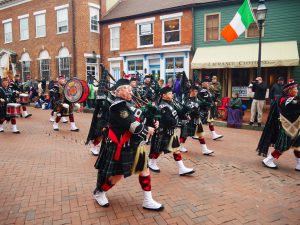 The Annapolis Irish Festival where you can enjoy traditional Celtic music and Irish rock bands on three different stages, along with workshops and exhibits. Try some delicious Irish beef stew and other Irish favorites. Little Leprechaun Land (open on Saturday only 11am– 4pm) provides pony rides, face painting and other free activities for the kids. June 1 & 2, 2018 at Anne Arundel County Fairgrounds annapolisirishfestival.com
The Annapolis Irish Festival where you can enjoy traditional Celtic music and Irish rock bands on three different stages, along with workshops and exhibits. Try some delicious Irish beef stew and other Irish favorites. Little Leprechaun Land (open on Saturday only 11am– 4pm) provides pony rides, face painting and other free activities for the kids. June 1 & 2, 2018 at Anne Arundel County Fairgrounds annapolisirishfestival.com
16th Annual First Sunday Arts Festival Shop among the creations of 130 local and regional artisans; dine at outdoor cafes; and enjoy the music of more than seven live bands. It’s a great time to explore art galleries, take a game room challenge and/or create your own artwork at shops on West Street taking place on First block of West and Calvert Streets, Sunday, June 3 – 11am – 5pm – Admission: Free firstsundayarts.com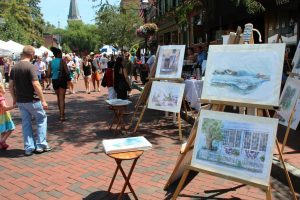
Dinner Under the Stars is a place for families and friends to come together and for couples to experience a romantic evening under the stars. Artists will paint from sundown to sunrise alongside the hundreds who come to dine, drink, and dance under the night sky. Spend Wednesday evenings dining, dancing and listening to live bands in the middle of the first block of West Street, just off Church Circle. Wednesdays, June 6, 13, 20, 27, 6pm – 10pm dinnerunderthestars.org
Photo Credit: VisitAnnapolis.org & Kenneth Tom Photography
Location: Various
Date: June 1 -10, 2018
Hours: Various
Tel: 410-268-4566
annapolisartsweek.com
For Regional Accommodations, Restaurants & Attractions: visitannapolis.org
US: Dunn, NC – Celebrating Cotton and Importantly, the Cotton Farmers
The 19th annual North Carolina Cotton Festival takes place in Downtown Dunn on November 4, 2017. This family-fun event draws more than 10,000 people each year and is a celebration of the farmer and in particular the cotton farmer and their contributions as well as the cotton farming and harvesting heritage that plays an important role in the Dunn area.
November is peak season for cotton farmers and downtown Dunn was once known as the largest wagon cotton yard in the country. During the festival, the local cotton gin, that until recent years was located in downtown, offers free tours through the gin, allowing you to see cotton production up close and personal. Shuttles are offered from the festival site to the gin every half hour.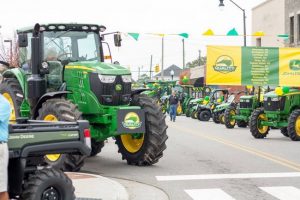
The event covers over 16 city blocks and offers entertainment on 2 stage featuring a variety of music, carnival rides and games, a classic car show -where over 100 antique and custom cars compete for best in show, petting zoo, Kiddie Land, Antique Tractor Show, over 125 vendors showcasing commodities like cotton, needle work, fabric, food and crafts.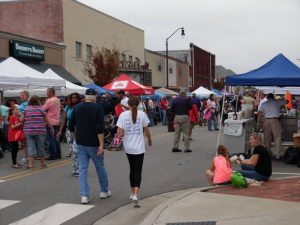
FREE admission, lots of downtown shopping at some interesting shops, freebies and family fun for all ages.
Location: Downtown Dunn
Date: November 4, 2017
Time:10am – 4pm
Tel: 910-892-3282
nccottonfestival.com
For Regional Accommodations, Restaurants & Attractions: dunntourism.org
US: Daytona Beach, FL – Calling All Jeep Aficionados… Jeep Beach is the Place to be!
Jeep enthusiasts celebrate a passion for off-road vehicles over 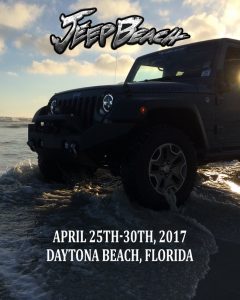 five days of family-friendly fun for Jeep owners. The Jeep Beach event has become the largest Jeep only five-day event in the southeast USA and is held each April in Daytona Beach, Florida to raise much needed funds for worthwhile local and national charities.
five days of family-friendly fun for Jeep owners. The Jeep Beach event has become the largest Jeep only five-day event in the southeast USA and is held each April in Daytona Beach, Florida to raise much needed funds for worthwhile local and national charities.
Thousands are expected at Daytona Beach and The World Center of Racing, the Daytona International Speedway for this unique Jeep Extravaganza. Jeep Beach attracts Jeepers and Jeep Industry Vendors from all over the USA, Canada, and even overseas. 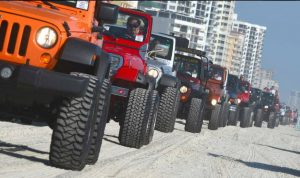
While appreciating the great weather with like-minded Jeep aficionados, enjoy and partake in the many festivities including: obstacle courses for all levels of drivers, largest Jeep specific vendor show, Beachside Mainstreet Cruise In, clean up at the Jeep-shining show, Pirate Night Themed Kick-off party, Scavenger Hunt, Off Site Trail Rides, Beachside Concert, Block Party and Fireworks, and $150,000 in Raffle Prizes.
Location: City wide Daytona Beach, FL 32118
Dates: April 25 – 30, 2017
Hours: For dates & times of specific events: jeepbeach.com/schedule-events
jeepbeach.com
For Regional Accommodations, Restaurants & Attractions: daytonabeach.com
Canadian Museum of Nature is Museum of Fun
If you are heading out to Ottawa to enjoy our nation’s capitol, leave some time to explore the Canadian Museum of Nature. It’s the perfect place for all ages of the family to enjoy themselves. The brainy kids (or adults) can soak up extensive details about nature while the playful gang can pull levers or turn knobs in a deep sea sub,  learn on many touch screens, or even dance around in front of the endothermy camera checking out their colorful “hotspots”.
learn on many touch screens, or even dance around in front of the endothermy camera checking out their colorful “hotspots”.
Everyone is awed by the the 19.8-metre blue whale skeleton in the Water Gallery but keeping going further in. All the way in the back are many interactive games for young and old alike: make believe areas for the wee ones, a board game along a wall, animal jigsaw puzzles on touch screens, word games, etc.
Gawk at the dinosaur fossils or walk amongst the fleshed-out dinosaur creatures for photo ops with kids. In the Vale Earth Gallery swoon over the 1200 gorgeous minerals, rocks and meteorites. Our 5 1/2-year-old couldn’t get enough of the joystick which controls a huge earth or the button to start the volcano.
Sure there’s a full size mammal gallery but the 11, 8 and 5 1/2 year-olds all stayed longer in the small Nature Live space where they oogled the cases of walking stick bugs in different camouflage colors and thicknesses. How many of you have come face to face with a tarantula? Then they listened intently as a docent showed fossils which were indigenous to Ottawa.
If you have time there are two 3D movies, “Prehistoric Planet 3D and Micro-Monsters 3D” (both too scary for the 5 1/2 -year old) but our gang liked the interactive museum more.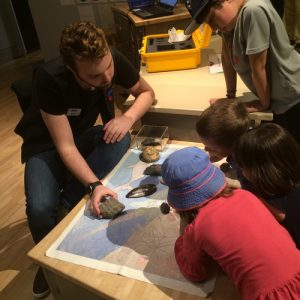
The famous Bird Gallery, with one of the most extensive collections of Canadian birds in the world re-opened June 1. A special exhibit on now is Ultimate Dinosaurs June 11-September 5 and then upcoming is Reptiles: The Beautiful and the Deadly, October 6-April 2 .
A brand new Arctic Gallery will be unveiled on June 23 which is set to explain how the arctic is changing, including plants, animals and people of the area plus scientific research. Outside, three new ecozones will be shown off on June 17 including a woolly mammoths and an “iceberg”.
I’d like to give a thumbs up to the friendly security guards who answered questions informatively and helped to point out nearby bathrooms and water fountains.
Canadian Museum of Nature, a Beaux Arts building, was our first national museum, completed in 1912. Trivia buffs should note that this building served as home to Canada’s House of Commons and Senate following the fire that destroyed the Centre Block of Parliament in 1916.
Location: 240 McLeod St., Ottawa
Phone: 613-364-4021
www.nature.ca
South Africa: Visiting Robben Island, UNESCO World Heritage Site
By Adele Shapiro – March 2012.
As a child I used to visit Robben Island with my grandmother. Her son, my uncle, was a warder in the prison services there. The name “Robben”, despite sounding very English – is in fact the Dutch for “Seal” – and the name derives from the extensive seal colony that was found on the Island by the first Dutch settlers.
We would go to the Cape Town docks and from there, take a boat ride to the island, where we would spend the day with family. I was vaguely aware that there were bad people on the island, and that it was a prison…. but little did I know then of the role it was to play in South Africa’s later history. Years passed and now as an ad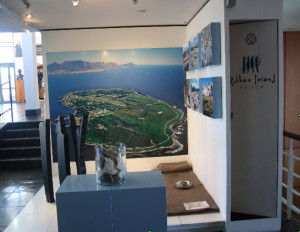 ult, I found myself revisiting the place where “the bad people” were kept, only now I realized that some were not so bad after all.
ult, I found myself revisiting the place where “the bad people” were kept, only now I realized that some were not so bad after all.
I bought a ticket for the tour some days before the trip, (advisable, as they fill up quickly) and took time out to examine the display at the Nelson Mandela Gateway at the V&A Waterfront in Cape Town.
There were many photographs of the political dissidents, the calls for boycotts, the anti-apartheid marches and there was also a prison cell that had been reconstructed for the purposes of the exhibit. I strongly recommend a visit to this exhibit before going to the island as it helps to contextualize the experience.
The trip began, as in times of old, with a boat ride from Cape Town docks, but this time instead of my uncle meeting us, we had a pleasant tour guide who told us jokes on our bus trip, whilst pointing out various sights on the island. Our bus was parked under a sign that said: “Welcome. We serve with pride.” I wondered if that sign had been there when Robben Island had been a prison as it was so sharply incongruous to the environment. I hoped not.
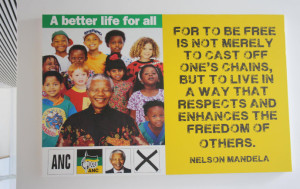 Robben Island has had a long history. First as a lighthouse to warn ships of the VOC, the Dutch East India Company (Verenigde Oostindische Compagnie), of the rocks that surround the island. But since the end of the 17th century, Robben Island has been used for the isolation of (mainly) political prisoners. The island was also used at various times as an animal quarantine station, a home for slaves, a leper colony, a hospital for the mentally ill and as a prison for French Vichy prisoners of war.
Robben Island has had a long history. First as a lighthouse to warn ships of the VOC, the Dutch East India Company (Verenigde Oostindische Compagnie), of the rocks that surround the island. But since the end of the 17th century, Robben Island has been used for the isolation of (mainly) political prisoners. The island was also used at various times as an animal quarantine station, a home for slaves, a leper colony, a hospital for the mentally ill and as a prison for French Vichy prisoners of war.
First we saw the Leper Graveyard and then house where Robert Sobukwe (Founder of the Pan Africanist Congress) had been kept separate from the other political dissidents.
It seems that Robert Sobukwe had special status in the prison. He was kept in solitary confinement at all times, but allowed certain privileges including access to books, being permitted to study, being permitted to wear civilian clothes, and being permitted bread. His children were allowed to visit him and they had their own bedroom in his “house”. Robert Sobukwe was convicted of incitement for demonstrating against and defying the Pass Laws, and in particular, for his connection to the PAC demonstration (although he was not present) which became known as the Sharpeville Massacre.
The notorious Pass Laws required black people to carry a pass book at all times when outside their compounds or designated areas, and were designed to limit severely the movements of the non-white population. This legislation was one of the dominant features of the country’s apartheid system.
Sobukwe was sentenced to three years in prison. After serving his sentence, he was moved to Robben Island for internment, as a new law called the General Law Amendment Act had been passed, which permitted his imprisonment to be renewed annually at the discretion of the Minister of Justice. This procedure became known as the “Sobukwe clause” and Robert Sobukwe was the only person whose imprisonment was extended under this clause. Imagine how special one has to be in order for parliament to pass a law just for you!
We also learned from our tour guide that the American politician and Pastor, Andrew Young, had fostered Sobukwe’s children in the USA, while Sobukwe had been in prison.
Our tour continued to the lime quarry where the political prisoners had worked. At the entrance to the quarry we saw a small cairn, and learned its history. In February 1995, (the landmark change of government was in 1994), about one thousand former political prisoners gathered again on Robben Island, but this time as free men, and to mark the occasion, each one placed a small stone from the quarry in a pile, making a small memorial to their years of hardship and struggle.
As we continued on our bus ride, we were shown a church, a hospital, a school and a mosque, and realized that far beyond our expectations, the island had supported a whole community. We duly arrived at the prison and tumbled out of the bus for our tour of “the real thing”. We were excited and filled with high spirits and I wondered for a moment where my heart would have been had I not been a tourist.
Inside we found grey walls. It was cool at midday; it was clear that at midnight it would be very cold. The communal cells were large and each had a bathroom attached.
Here we met our prison tour guide, Derrick Basson, a former political prisoner who served time on Robben Island for sabotage.
Derrick was very patient, humble and remarkably, not bitter. He answered all the insensitive questions calmly and without anger. In addition he explained the grading of the prisoners by race and also the diets that varied due to the racial classification of each prisoner. One of the curious facts he told us was that black prisoners were not given bread. As they were Africans their “natural” food was considered to be maize meal. The mixed race prisoners were allowed bread as they were considered to be more western or European and less African. The black Africans were also not allowed jam or syrup. I suppose you do not need jam if you have no bread.
Then I remembered that Robert Sobukwe, in spite of being black, was allowed to have bread, and it struck me that this must have been because he had been a university professor, and since this is a very “European” and non-tribal job, maybe he was considered eligible to receive bread.
Derrick further explained how prisoners slept on mats on the floor and how 5 blankets had not been enough to keep them warm at night. I suddenly remembered an interview with a former Alcatraz inmate who spoke of the extreme cold and of how prisoners had learned to sleep with only their elbows and knees touching the floor, hands locked behind the head. I became very grateful for my duvet.
We were told that in the beginning the political prisoners had been kept with the ordinary criminals, but later on, they were, thankfully, given their own “wing” and kept together. They came to call this place “The University” as they learned many things from each other and many of them also obtained degrees while in prison.
Derrick then took us to a yard where the prisoners had chopped rocks and turned them into stones, day after day in the sun. They were told that these rocks were used for roads built on the island, but no one seemed to know if this was true or not.
We were then taken to Nelson Mandela’s cell. Mandela was a militant anti-apartheid activist, as well as the co-founder and leader of the armed wing of the African National Congress (ANC), Umkhonto we Sizwe or “Spear of the Nation”. He was arrested in 1962 and convicted of sabotage, (amongst other charges), after he admitted to manufacturing explosives and acts of public violence, and was sentenced to life imprisonment. Mandela served 27 years in prison, 18 of these on Robben Island. After his release, he served as President of South Africa from 1994 to 1999.
My very first impression was of how small the cell was. No, not small, tiny. And then I thought that at least he could stand up and lie down in it, but not much more than that. At least it was larger than the dreadful box that I had heard was used in China. But there was no toilet. Just a metal bucket with a lid. At least a lid. And no tap, so no water. And if you are thirsty during the night, what should you do? And of course there was no electrical socket and no radio nor TV. And all I could think of was 27 years. TWENTY SEVEN YEARS! There was no door handle on the inside. The door was only operational from the outside, not unlike a cage. I remembered that Nelson Mandela had once remarked that the hardest and most traumatic experience he endured whilst on Robben Island for all those years was that he never ever saw, or even heard, a child. Can you imagine that? Now he insists on being photographed with children, whenever possible.
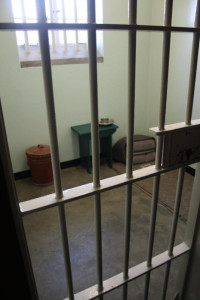 And then it was all over. We walked out to the yard, Derrick took us to the exit, and we said our goodbyes.I felt an odd mixture of elation and depression. Very happy that I had been to a UNESCO World Heritage Site of such importance, happier still that it was no longer a prison, and most happy that I was leaving. Yet also depressed and ashamed because of the suffering this place represented.
And then it was all over. We walked out to the yard, Derrick took us to the exit, and we said our goodbyes.I felt an odd mixture of elation and depression. Very happy that I had been to a UNESCO World Heritage Site of such importance, happier still that it was no longer a prison, and most happy that I was leaving. Yet also depressed and ashamed because of the suffering this place represented.
Duly subdued, we gratefully returned to our boat to ponder our feelings of inspiration and shock, enjoy the beautiful sunset cruise back to Cape Town, and watch a school of dolphins at play in the sea.
Remember when planning a visit to Robben Island, that the tours don’t always run on time. There was no snack bar on the boat. Our boat was 1 hour late in leaving Cape Town harbour and then we were rushed through our tour, which was a pity as there was too little time for questions.
A suggestion would be to make no appointments after the visit as the timing can vary, and also, take a snack pack. A sun hat and sun block are also good ideas.
Ferries depart (supposedly) at 9am, 11am, 1pm and 3pm, weather permitting, from Nelson Mandela Gateway, at the V&A Waterfront in Cape Town. Tickets costs are R230 for adults and R120 for children (U/18). Telephone: +27 (0)21 413 4200
Fax: +27 (0)21 419 1057



